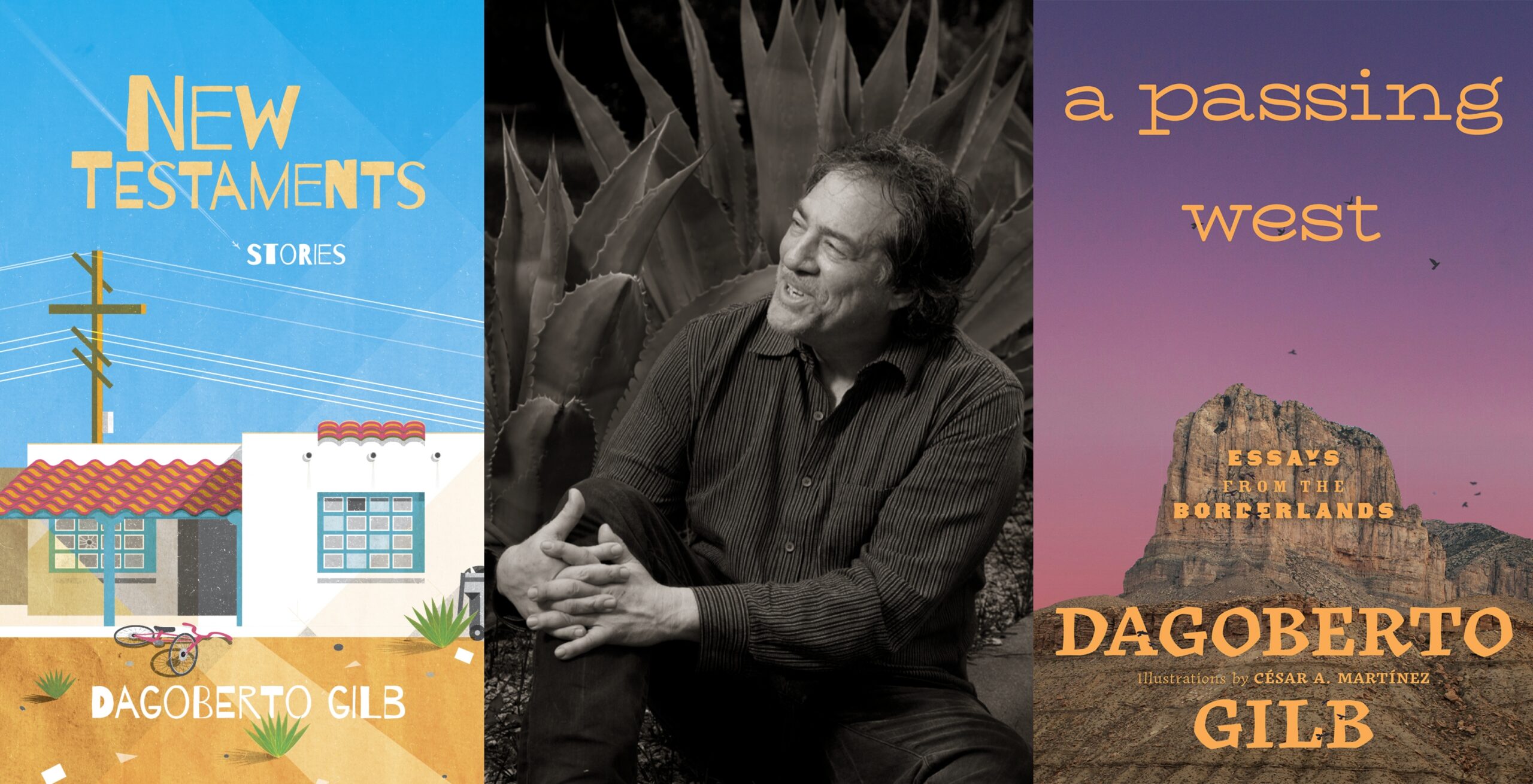Q&A with Katharine Hayhoe
Texas Tech climate scientist discusses faith and global warming

This is Part Three in an occasional series of Q&As with Texans involved in issues of the environment and energy. (Read Part One with Bee Moorhead here, and Part Two with Andy Sansom here.)
Katharine Hayhoe is a highly-regarded climate scientist and a professor in the Department of Geosciences at Texas Tech University.
She’s also an expert reviewer for the Nobel Prize-winning Intergovernmental Panel on Climate Change. In the grand tradition of scientists engaging with the public, Hayhoe frequently takes the time to explain climate science to general audiences.
Hayhoe’s first book, written with her husband Andrew Farley, a pastor at an evangelical church in Lubbock, is A Climate for Change: Global Warming Facts for Faith-Based Decisions. With good cheer, Hayoe and Farley tackle the incredibly thorny issue of global warming and evangelical Christianity, making both a factual case and a spiritual case for addressing the problem.
I put several questions to Hayhoe over email.
1a) Explain how you came to write a book about climate change geared specifically for Christians. Why was there a need for such a book?
There are many outstanding books on the science of climate change, and many others that present a Christian perspective on caring for the planet. The reason we decided to write our own book, however, is because we couldn’t find a good resource that addressed the most common scientific and theological questions about human-induced climate change. For example,
· How can climate change be happening if we believe God is in charge?
· Why should we care about climate change if we believe the world will end anyways?
· How do we know it’s not a natural cycle, or changes in energy from the sun that is causing these changes?
· And what about the weather today—it’s freezing outside! Where’s global warming now?
This book is the result of hundreds of conversations Andrew and I have had with people who are genuinely curious about global warming, but who are confused by all the rhetoric flying across the airwaves these days. We know everything we hear can’t be true—but which part is fact, and which is fiction? We wrote this book to provide simple, straightforward answers to many of the perplexing questions we’ve been asked by Christians, by conservatives, and by many others around the country.
1b) Are there differences in explaining climate science to a general audience versus a Christian audience?
Scientists and people of faith have often found themselves on opposite sides of the fence on issues related to the origins and sanctity of life. The unfortunate result is that many tend to lump environmental concerns into the same bin of what they view as “liberal scientific propaganda.”
In our book, we argue that climate change should not be dismissed out of hand because of any preconceived prejudices against science or environmentalism. Climate change is about real thermometer readings and real temperatures over the last 200 years. It has nothing to do with the age of the earth (even we, the authors, disagree on that issue!), and everything to do with protecting the poor and the disadvantaged who lack the voice to speak for themselves.
It’s essential to demonstrate how there is no conflict between faith in an all-powerful God and acknowledging that humans are radically altering the face of our planet. In fact, they are completely compatible. We already know that bad things happen in our world. Poor choices have consequences. We live this out in our own lives, and now we see the same principle at work at the global scale.
As we say in the book, God may have given us the ostrich, but it wasn’t as a mythical example to imitate when confronted with unpleasant facts we’d rather ignore. Instead, we should take the words of the apostle Paul to heart when he tells us that ““everything is permissible,” but not everything is profitable.” If this warming is occurring—and all the climate data we have indicates it is—then we Christians should be using our sound minds and God-given wisdom to seek solutions. It’s no different from what our response should be to our economic crises or crime running rampant in our streets. We need to seek a solution because it is both sensible and right to do so.
2) Polling has shown that evangelical Christians are less likely to acknowledge the reality of anthropogenic climate change than any other group in America. Why do you think this is? Do you believe that this position is shifting within the evangelical community?
There are many reasons why evangelical Christians may be hesitant to acknowledge the reality of human-induced climate change.
One reason could be the false politicization of science that has taken place over the last few decades. Evangelicals tend to be politically conservative; and the sad truth is that some people and organizations with vested interests in maintaining our addiction to inefficient, dirty, and outdated sources of energy have gone out of their way to frame the science of climate change as some kind of liberal hoax. But the truth is that the science of climate change is not about blue politics, or red politics, or even green politics. Rather, it’s about thermometers and temperature readings, and measurements that humans have been making for hundreds of years.
A second reason why we may not yet recognize the urgency of climate change is because many of us are not on the front lines. Where we live, we have clean water and clean air. The ground beneath us is not melting and crumbling away; we are not seeing the crops we depend on for our livelihood withering and dying in front of our eyes; nor are we observing the rising ocean waters lapping on our doorstep.
Many of our brothers and sisters around the world, however, are not so fortunate. Climate change has a human face. Real people, from Alaska to Africa, are already experiencing its impacts. Recognizing the reality of climate change and reaching out to help our global neighbors is a tangible expression of this love.
I believe this is the main reason why we are beginning to witness a major change in Christian attitudes towards climate change. In our book, we list people and organizations, from evangelical pastor Rick Warren of Saddleback Church to the US Conference of Catholic Bishops, who have made firm statements acknowledging the role of humans in altering our planet. We have also seen many faith-based aid organizations, from World Vision to Eden Reforestation, become actively involved in mitigating the effects of climate change on the poor and disadvantaged around the world.
More and more, Christian communities are embracing the fact that we are indeed facing a serious issue at the planetary scale, and that loving our global neighbor means that we need to take prudent steps toward change.
3) You address the frustratingly common conflation of weather and climate. We often hear pundits (or our friends and neighbors) complain that one cold-weather event somehow debunks the notion that the climate is warming over decades. This meme became especially prevalent during the blizzards on the East Coast this winter. Could you explain the difference between weather and climate, and why a colder-than-normal winter in one place doesn’t undermine a global warming trend?
We’re all guilty of confusing weather with climate. Every time it’s particularly cold out, it’s hard to resist complaining about how we’d like a little global warming now, please! But what we need to understand is that weather and climate are two very different things.
Weather is inherently unpredictable and chaotic. Weather is what happens from day to day, and even from year to year. Weather is that record snowfall, or that unusually hot year.
Climate, on the other hand, is predictable—if we know what is making it change. Climate is the long-term statistics of weather, over decades to centuries. Climate is the average conditions you would expect if you visited Florida vs. Alaska in January.
When we talk about climate change, we have to take a step back and look at the big picture before we can figure out what’s going on. Climate is about changes that have happened over twenty, fifty, and even a hundred years; not about what happens from day to day, or even from year to year. So that’s why one cold day, or even a few record snowstorms, in no way call into question the legitimacy of climate change.
At the same time, the 2009 federal report, “Global Climate Change Impacts in the United States,” which I co-authored, noted that climate change could bring more snow storms for the east coast, not less! How could that be?
Although “global warming” makes us think it’s all about temperature change, in reality climate change encompasses all kinds of shifts in the conditions we are used to. One important climate trend we have seen over the last fifty years is a nearly 60% increase in the frequency of what we call “heavy precipitation events” over the U.S. Northeast and Mid-Atlantic regions. In summer, this translates into more frequent downpours. In winter, however, it means more heavy snow.
We can’t blame any single one event, or even an entire winter’s worth of snow, on climate change; but we can connect long-term increases in yearly averages to global change. And so it’s very possible that climate change could be causing more frequent and heavier snow storms in some parts of the world at the very same time that the planet is warming.
(Web link for the climate impacts report: http://www.globalchange.gov/usimpacts/)


